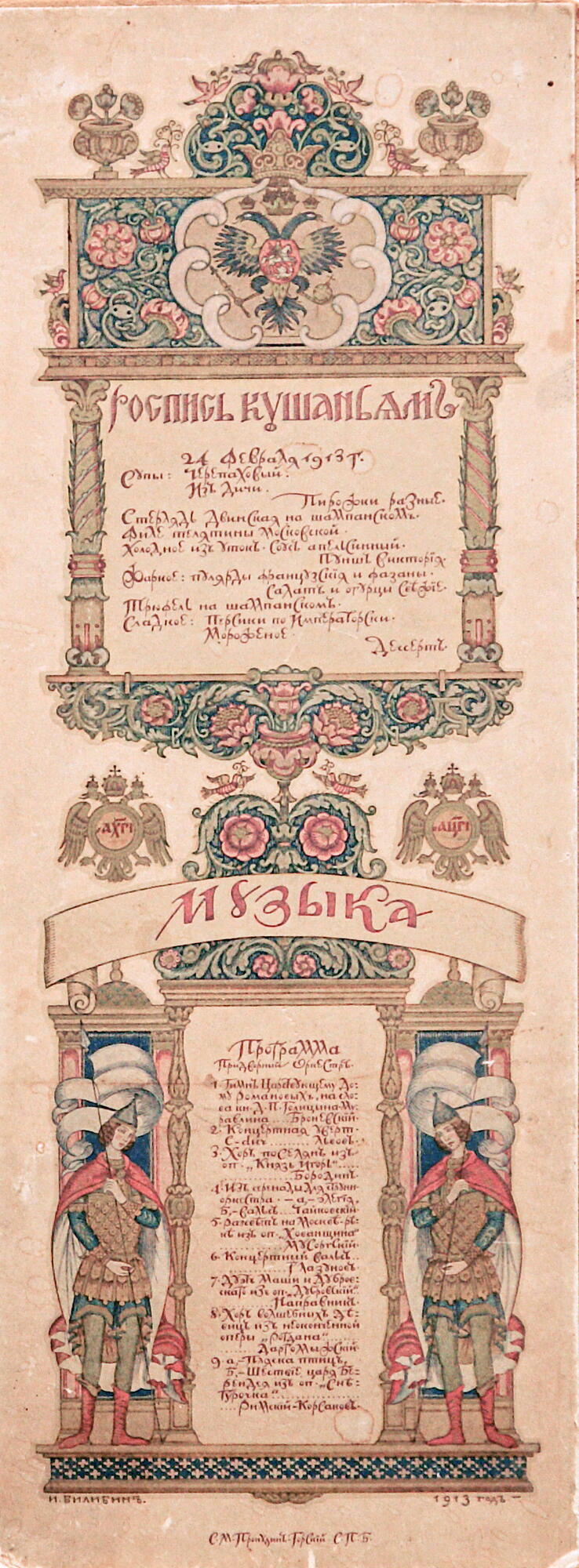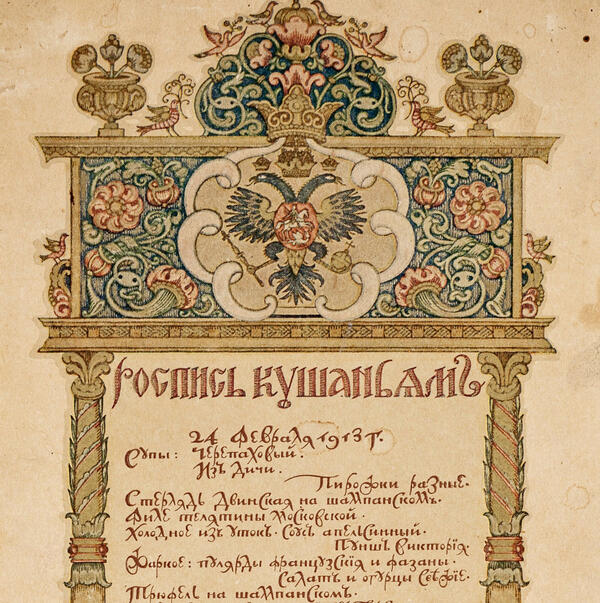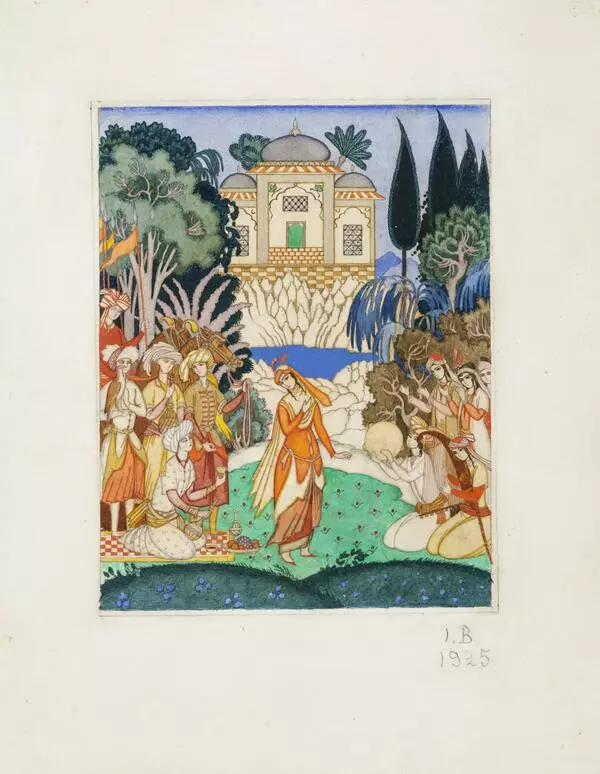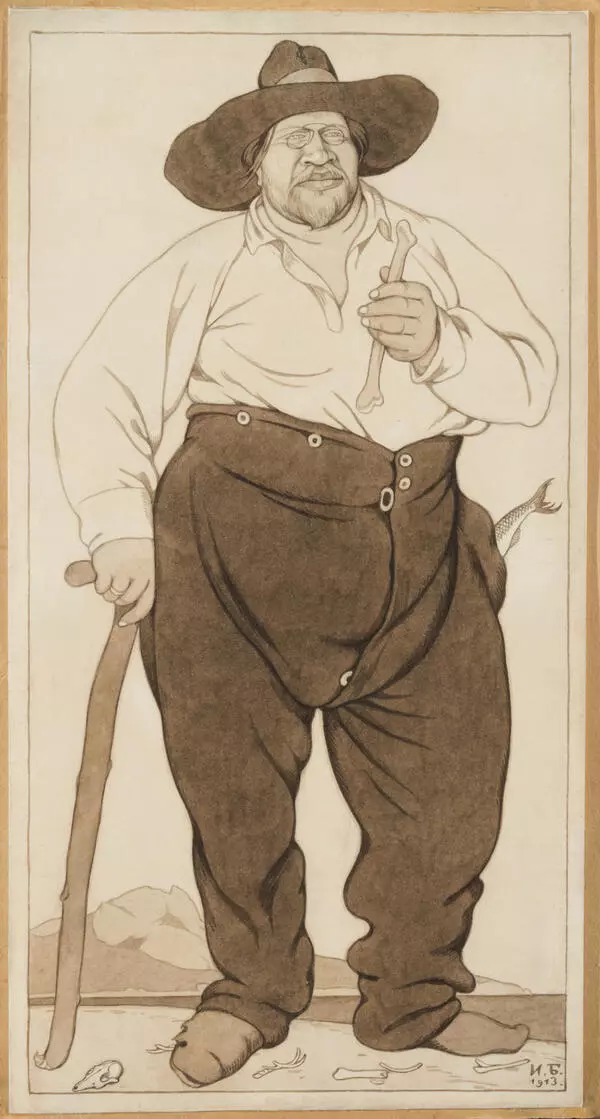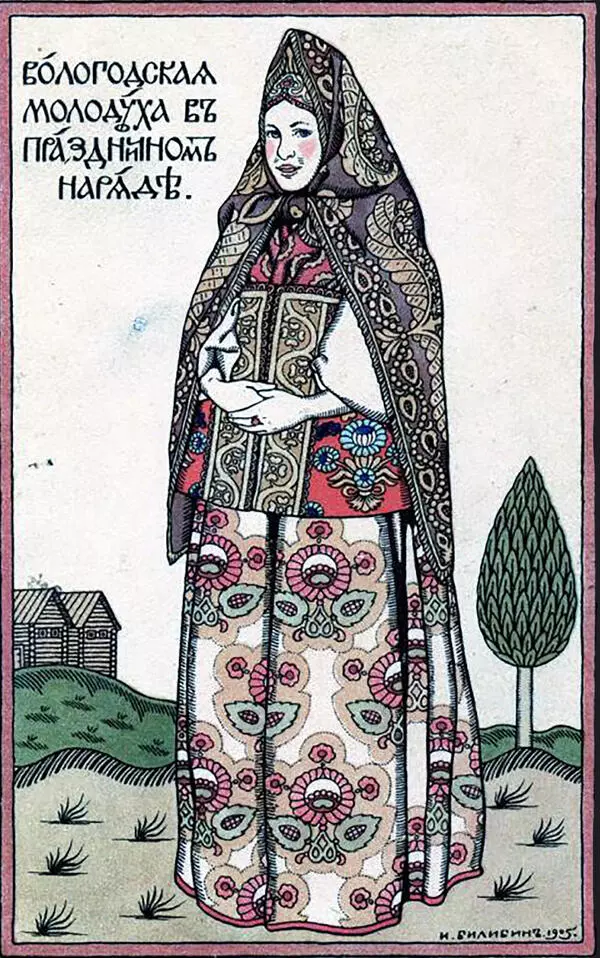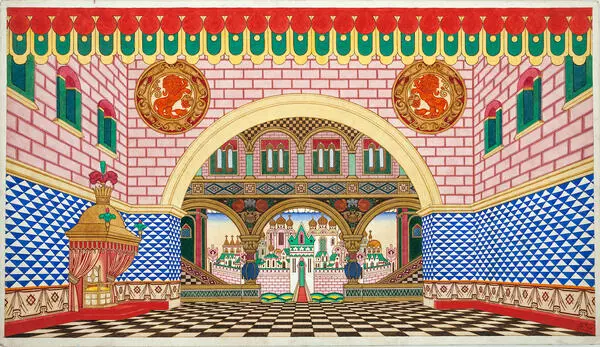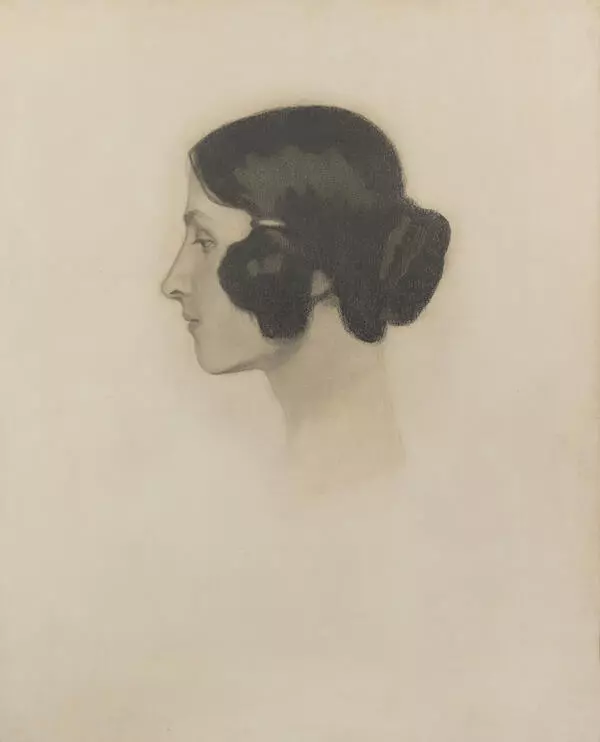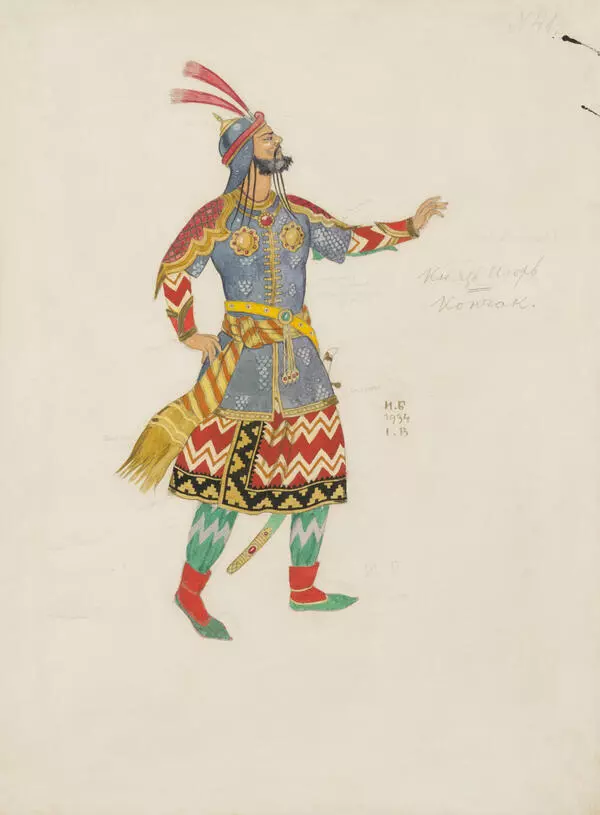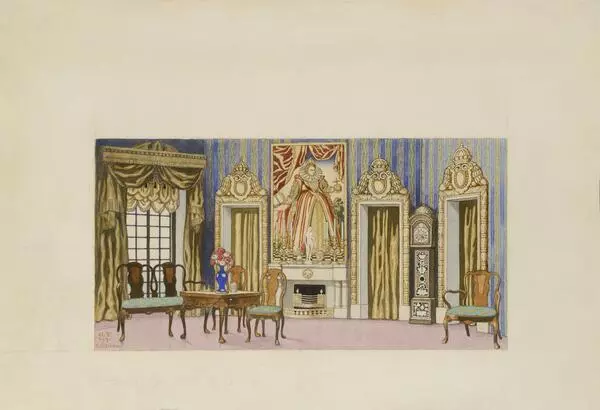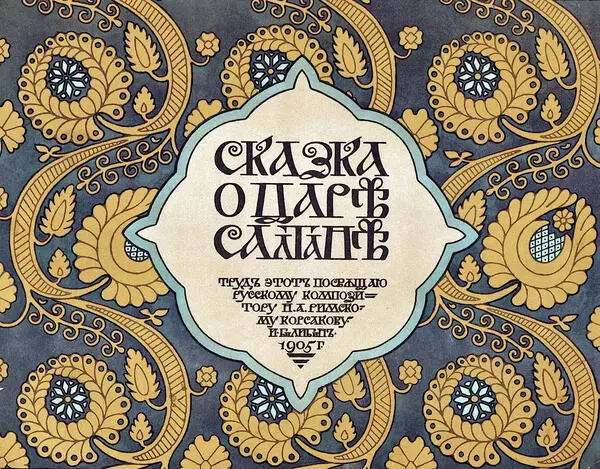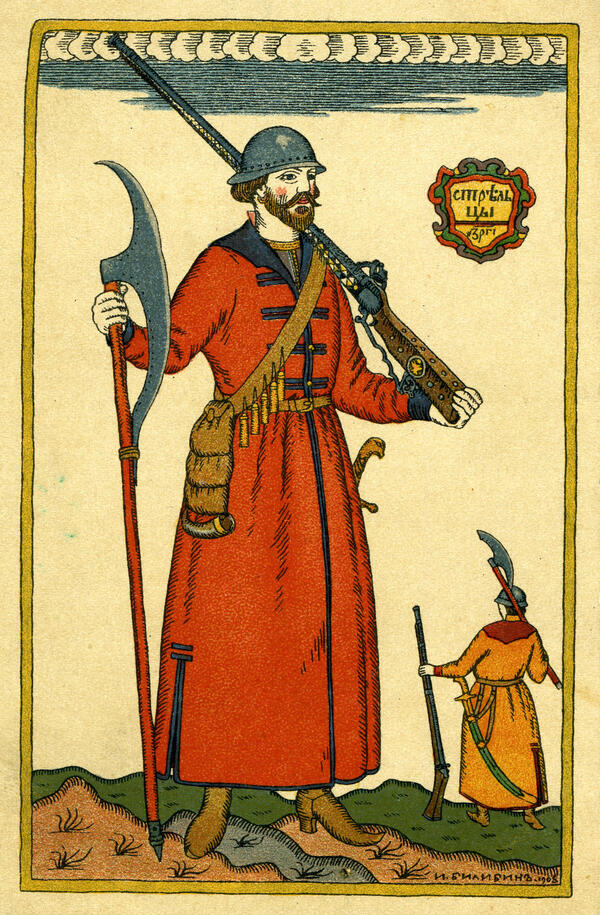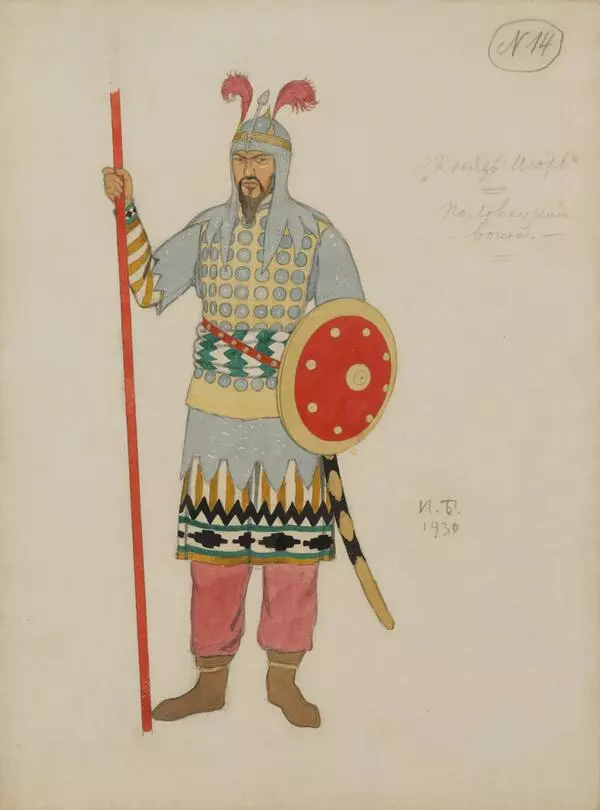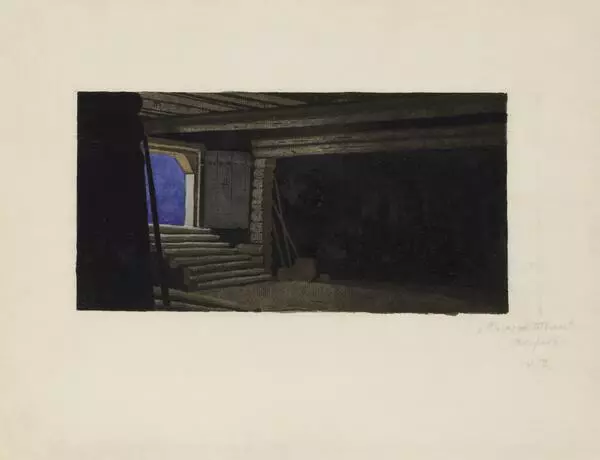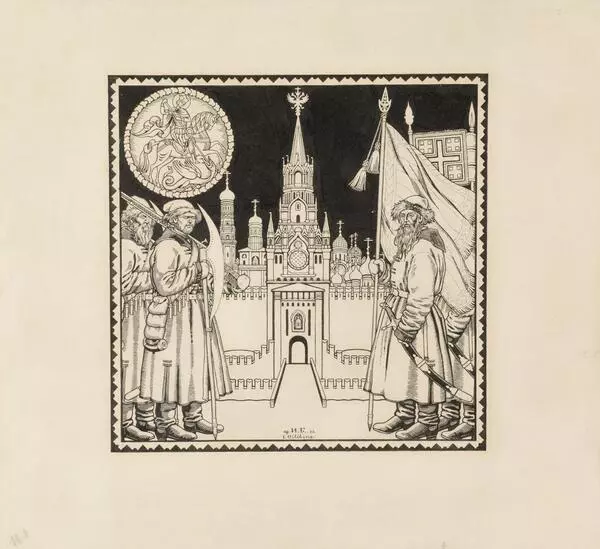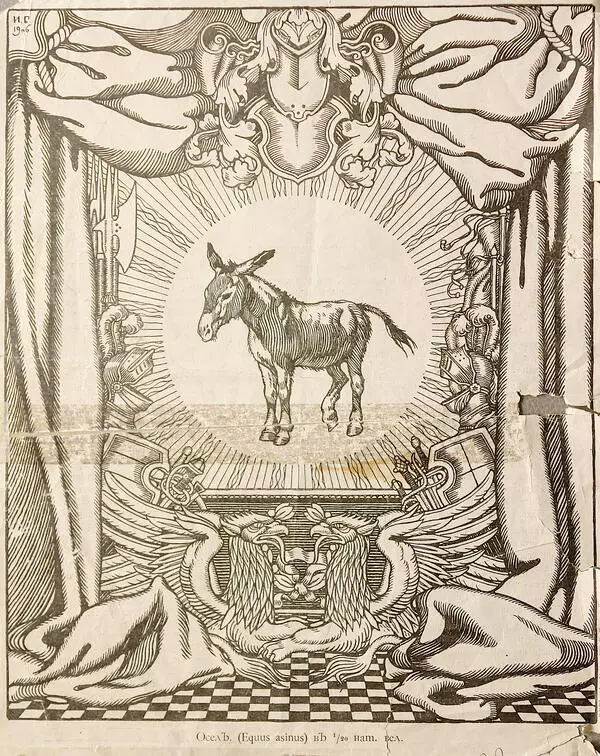The menu (“List of dishes”) was published by the printing house of Sergey Mikhaylovich Prokudin-Gorsky. The menu was designed Ivan Yakovlevich Bilibin in 1913, the year of the Tercentenary of the House of Romanov.
The décor of the country-wide celebrations was executed specifically in the Russian style, which is also evident in the sketch of the lunch menu: in it one can notice the dominating motifs of Old Russian architecture and icon painting. Bilibin, who was well known by that time for his artworks in the Russian style, received the order to work on the design of the menu. The menu as per tradition includes two parts: food and music. Such artistically designed menus were often kept by guests to commemorate their presence at a gala dinner. They were considered collectibles.
In 1913, the Romanov Tercentenary was a tremendous celebration. It included thanksgiving molebens served in churches in all Russian cities, military parades of local military garrisons, solemn balls, dinners and receptions hosted by governors and mayors, historical exhibitions and folk festivals. The windows of many houses and shops were decorated with flags and portraits of Tsar Michael Romanov and the reigning Emperor Nicholas II.
The program of anniversary festivities was extensive, they began in February and lasted until the fall of 1913. In Saint Petersburg, preparations for the festivities had started three years prior. A “Committee of organizing the celebration of the tercentenary of the reigning House of Romanov” was formed and an “Imperial Manifesto” was issued on the occasion. The manifesto, according to the “Ceremonial Protocol”, was read out in all Russian churches after the liturgy, before the solemn prayer service, on February 21, 1913. The celebrations ended with a grand gala dinner at the Winter Palace in Saint Petersburg on February 24, 1913 (Forgiveness Sunday).
By decree of Nicholas II, in addition to traditional Russian dishes, the lunch menu also included French cuisine, for example, turtle soup and truffles. This seemingly insignificant detail indicated Nicholas’s desire to please “foreign partners”. The contents of the menu of the royal dinner attracted the attention of political opponents of Nicholas II.
The décor of the country-wide celebrations was executed specifically in the Russian style, which is also evident in the sketch of the lunch menu: in it one can notice the dominating motifs of Old Russian architecture and icon painting. Bilibin, who was well known by that time for his artworks in the Russian style, received the order to work on the design of the menu. The menu as per tradition includes two parts: food and music. Such artistically designed menus were often kept by guests to commemorate their presence at a gala dinner. They were considered collectibles.
In 1913, the Romanov Tercentenary was a tremendous celebration. It included thanksgiving molebens served in churches in all Russian cities, military parades of local military garrisons, solemn balls, dinners and receptions hosted by governors and mayors, historical exhibitions and folk festivals. The windows of many houses and shops were decorated with flags and portraits of Tsar Michael Romanov and the reigning Emperor Nicholas II.
The program of anniversary festivities was extensive, they began in February and lasted until the fall of 1913. In Saint Petersburg, preparations for the festivities had started three years prior. A “Committee of organizing the celebration of the tercentenary of the reigning House of Romanov” was formed and an “Imperial Manifesto” was issued on the occasion. The manifesto, according to the “Ceremonial Protocol”, was read out in all Russian churches after the liturgy, before the solemn prayer service, on February 21, 1913. The celebrations ended with a grand gala dinner at the Winter Palace in Saint Petersburg on February 24, 1913 (Forgiveness Sunday).
By decree of Nicholas II, in addition to traditional Russian dishes, the lunch menu also included French cuisine, for example, turtle soup and truffles. This seemingly insignificant detail indicated Nicholas’s desire to please “foreign partners”. The contents of the menu of the royal dinner attracted the attention of political opponents of Nicholas II.
